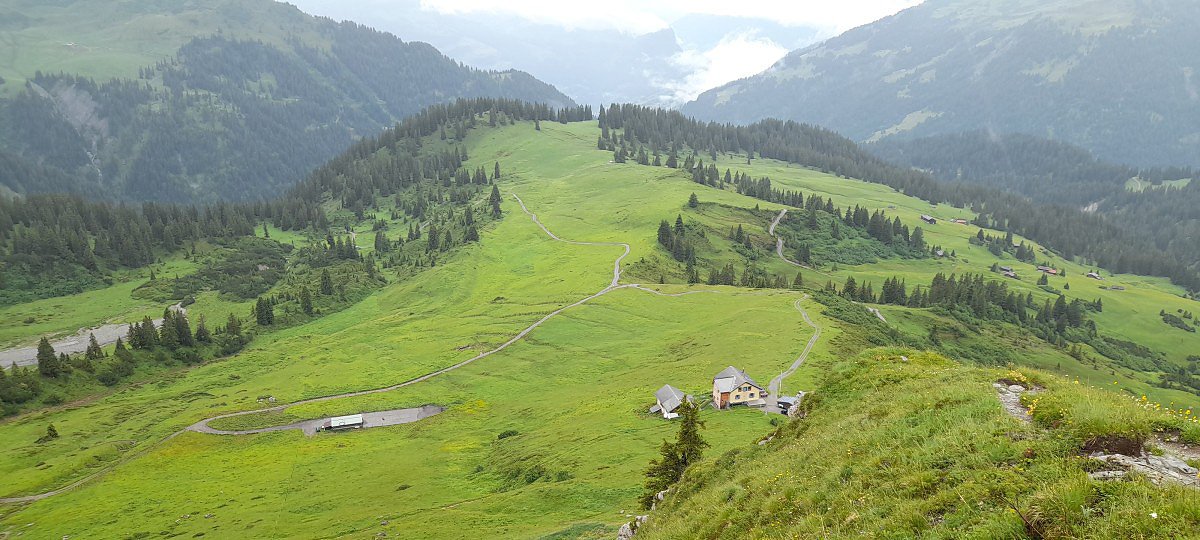Why are Grauspitz Mountains So Prominent?
Unraveling Nature's Masterpiece: The Significance of Grauspitz Mountains
Grauspitz Mountains

Nestled within the majestic embrace of the Alps, the Grauspitz Mountains rise proudly as a symbol of nature’s grandeur and power. Situated on the border between Liechtenstein and Switzerland, these towering peaks command attention and admiration, drawing adventurers and nature enthusiasts from far and wide. In this comprehensive exploration, we delve deep into the reasons behind the prominence of the Grauspitz, uncovering the geological, geographical, and cultural factors that contribute to their awe-inspiring stature.
Geological Formation:
To understand the prominence of the Grauspitz Mountains, we must first explore their geological origins. Formed millions of years ago through tectonic forces and geological processes, the Grauspitz are part of the Rätikon range of the Alps. Their rugged terrain, characterized by steep cliffs, jagged peaks, and deep valleys, reflects the complex geological history of the region. The uplift of rock layers and the erosion caused by glaciers and rivers have sculpted the landscape over time, creating the dramatic features that make the Grauspitz Mountains so visually striking and prominent.
Elevation and Height:
One of the most defining characteristics of the Grauspitz Mountains is their impressive elevation and height. At 2,599 meters (8,527 ft) above sea level, the Grauspitz stands as the highest mountain in Liechtenstein, towering over the surrounding landscape with a commanding presence. Its lofty summit offers unparalleled views of the Alpine region, attracting mountaineers and hikers seeking to conquer its challenging slopes and bask in its majestic beauty. The sheer height of the Grauspitz contributes to their prominence, both physically and metaphorically, making them a landmark of significance in the Alpine landscape.
Alpine Biodiversity:
Beyond their geological and geographical features, the Grauspitz Mountains are home to a rich diversity of flora and fauna, further enhancing their prominence in the natural world. From alpine meadows carpeted with wildflowers to dense forests teeming with wildlife, the Grauspitz support a myriad of ecosystems and habitats. Rare and endemic species, adapted to the harsh conditions of the high altitude environment, find refuge in the remote corners of the mountains, adding to their ecological significance and cultural value. The preservation of this biodiversity is essential for maintaining the prominence of the Grauspitz Mountains as a sanctuary for life in the Alps. Just as we know Why are Moldoveanu Mountains So Prominent?
Cultural and Historical Significance:
Throughout history, the Grauspitz Mountains have played a central role in the cultural and historical narratives of the Alpine region. Indigenous peoples, such as the Walser and Rhaeto-Romansh communities, have lived in harmony with the mountains for centuries, drawing inspiration from their majestic presence and relying on their resources for survival. Over time, the Grauspitz Mountains have become symbols of national identity and pride for the people of Liechtenstein and Switzerland, celebrated in literature, art, and folklore as enduring icons of Alpine beauty and resilience. The cultural and historical significance of the Grauspitz adds another layer of prominence to their status as natural landmarks in the Alpine landscape.
Tourism and Recreation:
In modern times, the prominence of the Grauspitz Mountains is further amplified by their popularity as a tourist destination and recreational playground. Each year, thousands of visitors flock to the Alps to experience the thrill of hiking, climbing, skiing, and mountaineering in the shadow of the Grauspitz. Scenic vistas, adrenaline-pumping adventures, and immersive cultural experiences await travelers who venture into the heart of the mountains, ensuring that the Grauspitz remains a prominent fixture on the tourism map of the Alps. The economic and social benefits derived from tourism contribute to the ongoing prominence of the Grauspitz as a vibrant and dynamic destination for outdoor enthusiasts and nature lovers.
Conclusion: Embracing the Majesty:
As our exploration of the prominence of the Grauspitz Mountains comes to a close, we are left with a profound appreciation for the multifaceted factors that contribute to their enduring significance in the Alpine landscape. From their geological origins and lofty heights to their rich biodiversity and cultural heritage, the Grauspitz Mountains stand as a testament to the majesty of nature and the resilience of the human spirit. Whether admired from afar or experienced up close, the Grauspitz inspire awe and wonder, inviting us to embrace their prominence and cherish the timeless beauty of the Alps.
In conclusion, the Grauspitz Mountains are prominent due to a combination of geological, geographical, cultural, and recreational factors. Their impressive elevation, rich biodiversity, cultural significance, and popularity as a tourist destination all contribute to their enduring prominence in the Alpine landscape. As symbols of nature’s grandeur and human endeavor, the Grauspitz inspire admiration and awe, inviting us to explore, appreciate, and preserve their majestic beauty for generations to come.
Know More about Grauspitz Mountains.
What Are The Tourist Places Nearest to Grauspitz Mountains?
When Were Grauspitz Mountains Formed?
Where Are Grauspitz Mountains Located?
Who Discovered Grauspitz Mountains?
How to Reach Grauspitz Mountains?




